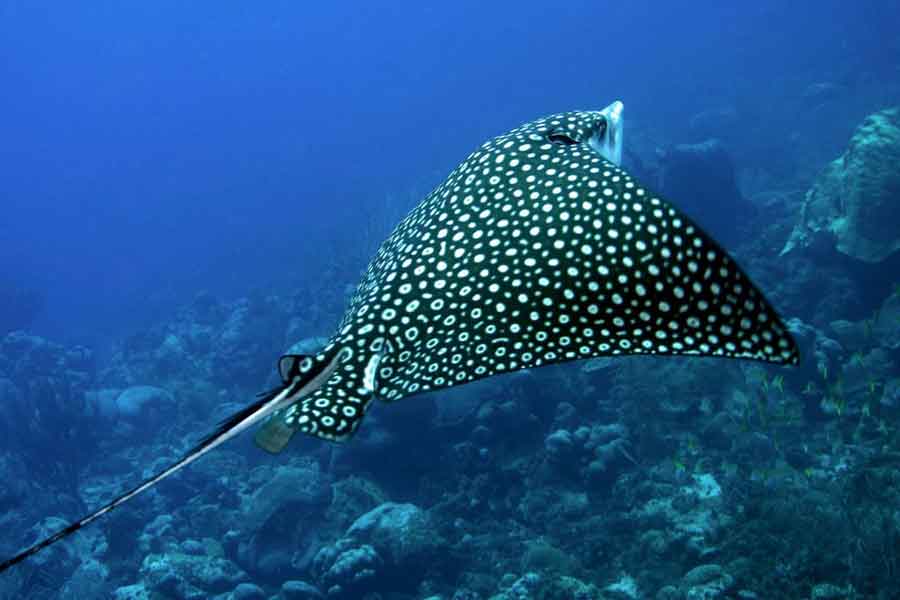
Manta rays are often confused with large stingrays, despite the substantial differences between the two. In principle, it could be said that size is a distinguishing factor, as a large stingray can measure up to two meters from wingtip to wingtip, while a manta ray can reach up to nine meters. According to a record of a manta ray caught in the Bahamas, it had a wingspan of five meters and weighed 1,360 kilograms, but even the largest stingrays rarely exceed 400 kilograms.
Furthermore, their body shape varies significantly: stingrays have their mouth on the underside of the body and use it to stick to the seafloor, extracting their food from there. This suggests that they have benthic habits (benthos – bottom-dwelling). On the other hand, manta rays have a much larger mouth located at the front of their body. They have two cephalic lobes on each side of the mouth, which allow them to direct the entry of plankton, the basis of their diet. While it is common to see a stingray resting on the seafloor, it is equally common to see a manta ray swimming in mid-water or near the surface, filtering the water to obtain its small and precious food. Another difference is that stingrays need modified (flattened) teeth to crush crustaceans, while manta rays lack teeth and do not have a stinger on their tail.
It could be said that the manta ray belongs, along with the whale shark, to a group of «gentle giants» of the sea that, due to their size and tough skin, have no natural enemies (except for humans). As a plankton-eating animal, it is extremely slow. This makes it easily approachable by divers, and the animal does not mind human contact on its body. Manta rays are found in all tropical seas of the world, living in nearshore waters close to the coast as well as in open ocean areas. In the 1930s to 1950s, underwater hunters considered the manta ray an exceptional catch. Today, divers with a greater ecological awareness dream of an encounter where they can caress this unique fish that has learned to fly beneath the waves.
«One cannot defend what one does not love, and one cannot love what one does not know.»

